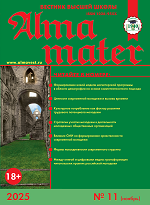UDC 37-052:316.6
https://doi.org/10.20339/AM.06-21.030
S.L. Talanov is PhD (Social Science), Ass. Prof., Ass. Prof. of Department of Political and Social Science at Yaroslavl State Pedagogical University e–mail: talanov_sergei@mail.ru
Analyzed is the scale of bullying in educational institutions: schools and universities. The reasons, forms and the existing system of bullying prevention are studied. The most widespread in schools is verbal (ridicule, threats, humiliation, slander) and physical bullying; in universities, social (ignoring, exclusion from the group, theft, damage to the victim’s property) and verbal bullying are more widespread. It was found that students from families who belong to low resourced groups, more often during the school period became victims of verbal, social and physical bullying. It was revealed that girls more often than boys were a subject to verbal bullying during schooling. At the same time, it was found that girls from families that belong to the middle and low resourced groups were more often subjected to verbal bullying than girls from families that belong to the highly–resourced groups. Young men who are physically weak, to a greater extent than young men who are physically developed, are the instigators of verbal bullying at school. Young men from families that belong to highly-resourced groups are less likely than young men from families that belong to middle and low resource groups to be verbally bullied at school. Boys from families that belong to medium and low resourced groups more often than boys from families that belong to highly–resourced groups were the instigators of verbal bullying at school. It was found that boys, more often than girls, faced physical bullying at school. At the same time, it was revealed that young men from families that belong to highly–resourced groups, less often than young men from families that belong to middle and low resourced groups, faced physical bullying during their schooling. Young men, more often than girls, play the role of an aggressor in physical bullying at school. In addition, it was found that girls are more likely than boys to be the instigator of physical bullying at school. In addition, it was found that bullying in schools is more widespread than in universities. At the same time, it was revealed that verbal and social bullying in universities in comparison with schools is not widespread. Obviously, this is due to the fact that many bullying aggressors in school did not have the resources to enter universities, or did not have the desire to enter universities. In addition, bullying in universities is subject to expulsion (in addition to other types of liability). A person comes to school forcibly, in a university most often voluntarily. In other words, it can be assumed that the fear of being expelled is a kind of deterrent to the spread of bullying in universities. Measures are proposed to improve the effectiveness of bullying prevention in educational institutions.
Key words: bullying, aggressor, victim, witnesses, instigators, bullying prevention, bullying law.
References
1. Talanov, S.L Deviant behavior in universities of CFR and NWFR: causes, scale, variations, perspective of resisting. Alma mater (Vestnik vysshei shkoly). 2013. No. 10. P. 28–32.
2. Bruno, V.V. Modern family as factor of inclusion of teenagers in various forms of deviant activity. In: Sociology and society: traditions and innovations in social development of regions. Collection of reports in VI all-Russian sociological congress (Tyumen, 14–16 October, 2020). Moscow: ROS; FNISTs RAS, 2020. P. 1905–1920.
3. Titova, M.P. Bulling as reality in teenagers environment of Russia. In: Phenomenology and prevention measures of deviant behavior. Materials of XII All-Russian scientific practical conference, 20 December, 2018. Krasnodar: Krasnodar university of MVD of Russia, 2019. P. 177–182.
4. Hall, W. The Effectiveness of Policy Interventions for School Bullying: A Systematic Review. J. Soc Social Work Res. 2017. Spring. 8. P. 45–69.
5. Hong, J.S., Espelage, D.L. A review of research on bullying and peer victimization in school: An ecological system analysis. Aggression and Violent Behavior. 2012. Vol. 17. P. 311–322.
6. Reijntjes, A., Kamphuis, J.H., Prinzie, P., Boelen, P.A., Van der Schoot, M., Telch, M.J. Prospective linkages between peer victimization and externalizing problems in children: A meta-analysis. Aggressive Behavior. 2011. P. 215–222.












.png)






